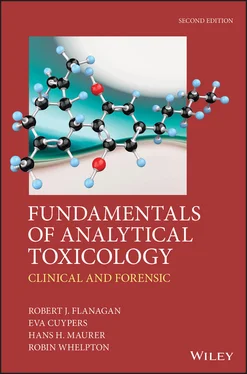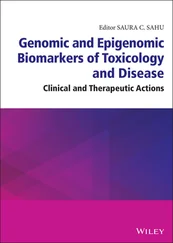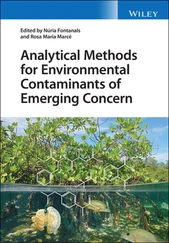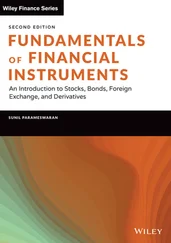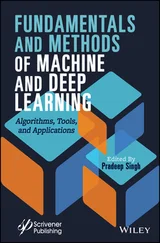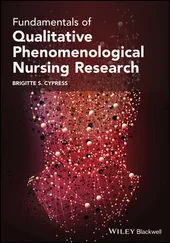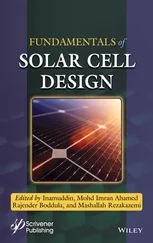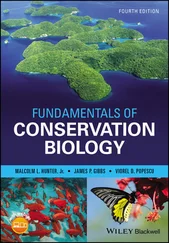1 Cover
2 Preface Notes
3 Health and Safety
4 Nomenclature, Symbols, and Conventions
5 Uniform Resource Locators
6 Amount Concentration and Mass Concentration
7 Acknowledgements
8 List of Abbreviations
9 Section A: The Basics 1 Analytical Toxicology: Overview1.1 Introduction 1.2 Modern analytical toxicology 1.3 Provision of analytical toxicology services 1.4 Applications of analytical toxicology 1.5 Summary References 2 Sample Collection, Transport, and Storage2.1 Introduction 2.2 Clinical samples and sampling 2.3 Guidelines for sample collection for analytical toxicology 2.4 Sample transport, storage, and disposal 2.5 Common interferences 2.6 Summary References 3 Basic Laboratory Operations 3.1 Introduction 3.2 Aspects of quantitative analysis 3.3 Use of internal standards 3.4 Method comparison 3.5 Non-parametric statistics 3.6 Quality control and quality assessment 3.7 Operational considerations 3.8 Summary References 4 Aspects of Sample Preparation4.1 Introduction 4.2 Modes of sample preparation 4.3 Plasma protein binding 4.4 Hydrolysis of conjugated metabolites 4.5 Extraction of drugs from tissues 4.6 Summary References 5 Colour Tests, and Spectrophotometric and Luminescence Techniques5.1 Introduction 5.2 Colour tests in toxicology 5.3 Colour tests for pharmaceuticals and illicit drugs 5.4 UV/Visible spectrophotometry 5.5 Fluorescence and phosphorescence 5.6 Chemiluminescence 5.7 Infrared and Raman spectroscopy 5.8 Summary References 6 Immunoassays and Related Assays6.1 Introduction 6.2 Basic principles of competitive binding assays 6.3 Heterogeneous immunoassays 6.4 Homogenous immunoassays 6.5 Microparticulate and turbidimetric immunoassays 6.6 Assay calibration, quality control, and quality assessment 6.7 Interferences and assay failures 6.8 Aptamer-based assays 6.9 Enzyme-based assays 6.10 Summary References
10 Section B: Separation Science 7 Separation Science: Theoretical Aspects7.1 General introduction 7.2 Theoretical aspects of chromatography 7.3 Measurement of analyte retention 7.4 Summary References 8 Planar Chromatography8.1 Introduction 8.2 Qualitative thin-layer chromatography 8.3 Quantitative thin-layer chromatography 8.4 Summary References 9 Gas Chromatography9.1 Introduction 9.2 Instrumentation 9.3 Columns and column packings 9.4 Headspace and ‘purge and trap’ analysis 9.5 Formation of artefacts in gas chromatography 9.6 Derivatization for gas chromatography 9.7 Chiral separations 9.8 Summary References 10 Liquid Chromatography10.1 Introduction 10.2 General considerations 10.3 Detection in liquid chromatography 10.4 Columns and column packings 10.5 Modes of liquid chromatography 10.6 Chiral separations 10.7 Derivatives for liquid chromatography 10.8 Use of liquid chromatography in analytical toxicology 10.9 Summary References 11 Supercritical Fluid Chromatography11.1 Introduction 11.2 General considerations 11.3 Detection in supercritical fluid chromatography 11.4 Columns and column packings 11.5 Chiral separations 11.6 Toxicological and forensic applications 11.7 Summary References 12 Capillary Electrophoretic Techniques12.1 Introduction 12.2 Theoretical aspects 12.3 Sample injection in capillary electrophoresis 12.4 Detection in capillary electrophoresis 12.5 Other capillary electrokinetic modes 12.6 Capillary electrophoretic techniques in analytical toxicology 12.7 Summary References 13 Mass Spectrometry13.1 Introduction 13.2 Instrumentation 13.3 Gas chromatography-mass spectrometry 13.4 Liquid chromatography-mass spectrometry 13.5 Supercritical fluid chromatography-mass spectrometry 13.6 Capillary electrophoresis-mass spectrometry 13.7 Direct introduction mass spectrometry 13.8 Presentation of mass spectral data 13.9 Interpretation of mass spectra 13.10 Quantitative mass spectrometry 13.11 Mass spectrometry imaging 13.12 Summary References 14 Ion Mobility Spectrometry14.1 Introduction 14.2 Theoretical aspects 14.3 Types of ion mobility spectrometry 14.4 Resolving power 14.5 Interfacing ion mobility spectrometry 14.6 Applications of ion mobility spectrometry in analytical toxicology 14.7 Summary References
11 Section C: Essential Pharmacokinetics 15 Absorption, Distribution, Metabolism, and Excretion of Xenobiotics15.1 Introduction 15.2 Movement of drugs and other xenobiotics around the body 15.3 Routes of administration 15.4 Distribution 15.5 Metabolism 15.6 Excretion 15.7 Pharmacogenetics and pharmacogenomics 15.8 Summary References 16 Pharmacokinetics16.1 Introduction 16.2 Fundamental concepts 16.3 Absorption and elimination 16.4 Drug accumulation 16.5 Sustained-release preparations 16.6 Non-linear pharmacokinetics 16.7 Multi-compartment models 16.8 Non-compartmental methods 16.9 Factors affecting pharmacokinetic parameters 16.10 Disease 16.11 Pharmacokinetics and the interpretation of results 16.12 Summary References
12 Section D: Analytical Toxicology 17 Toxicology Testing at the Point of Contact17.1 Introduction 17.2 Use of point of contact testing 17.3 Toxicology testing at the point of contact 17.4 Interferences and adulterants 17.5 Quality assessment 17.6 Summary References 18 Laboratory Testing for Substance Misuse18.1 Introduction 18.2 Urine testing 18.3 Oral fluid testing 18.4 Blood testing 18.5 Hair testing 18.6 Breath testing 18.7 Sweat testing 18.8 Summary References 19 General Analytical Toxicology19.1 Introduction 19.2 Gas chromatography 19.3 Gas chromatography-mass spectrometry 19.4 Liquid chromatography 19.5 Liquid chromatography-mass spectrometry 19.6 Liquid chromatography-high resolution mass spectrometry 19.7 Summary References 20 Therapeutic Drug Monitoring20.1 Introduction 20.2 Sample collection 20.3 Sample types 20.4 Analytical methods 20.5 Factors affecting interpretation of results 20.6 Gazetteer 20.7 Summary References 21 Trace Elements and Toxic Metals21.1 Introduction 21.2 Sample collection and storage 21.3 Sample preparation 21.4 Atomic spectrometry 21.5 Colorimetry and fluorimetry 21.6 Electrochemical methods 21.7 Catalytic methods 21.8 Neutron activation analysis 21.9 Chromatographic methods 21.10 Quality assessment 21.11 Summary References 22 Clinical Interpretation of Analytical Results22.1 Introduction 22.2 Clinical toxicology 22.3 Forensic toxicology 22.4 Gazetteer 22.5 Sources of further information 22.6 Summary References
13 Index
14 End User License Agreement
1 Chapter 1 Table 1.1 Methods for the analysis of drugs and other organic poisons in biol... Table 1.2 Methods for the analysis of toxic metals in biological materials Table 1.3 Steps in undertaking an analytical toxicological investigation Table 1.4 Summary of chiral nomenclature Table 1.5 Some terms used in stereochemistry Table 1.6 Terms used when reporting method validation Table 1.7 Some analytes not normally included in analytical toxicology screen...
2 Chapter 2 Table 2.1 Types of variables affecting clinical samples Table 2.2 Some clinical sample types Table 2.3 Anticoagulants for in vitro use Table 2.4 Sample requirements: general analytical toxicology Table 2.5 Sample requirements: post-mortem biochemistry and toxicology Table 2.6 Advantages and disadvantages of different sample types in analytica... Table 2.7 Some possible causes of coloured urine Table 2.8 Smells associated with particular poisons. a Table 2.9 Some drugs, metabolites, and other poisons unstable in whole blood ...
3 Chapter 3 Table 3.1 Effect of replicate analyses ( n ) on RSD (arbitrary assay RSD of 10 ... Table 3.2 Effect of amount of drug weighed on overall assay error Table 3.3 Data from a typical stability experimentTable 3.4 Comparison of parametric and non-parametric tests to compare means/...Table 3.5 The data of Figure 3.14 ranked according to the procedure of Box 3....Table 3.6 LGC EQA scheme: presentation of z -score resultsTable 3.7 Information important when reporting the results of toxicological a...
Читать дальше
